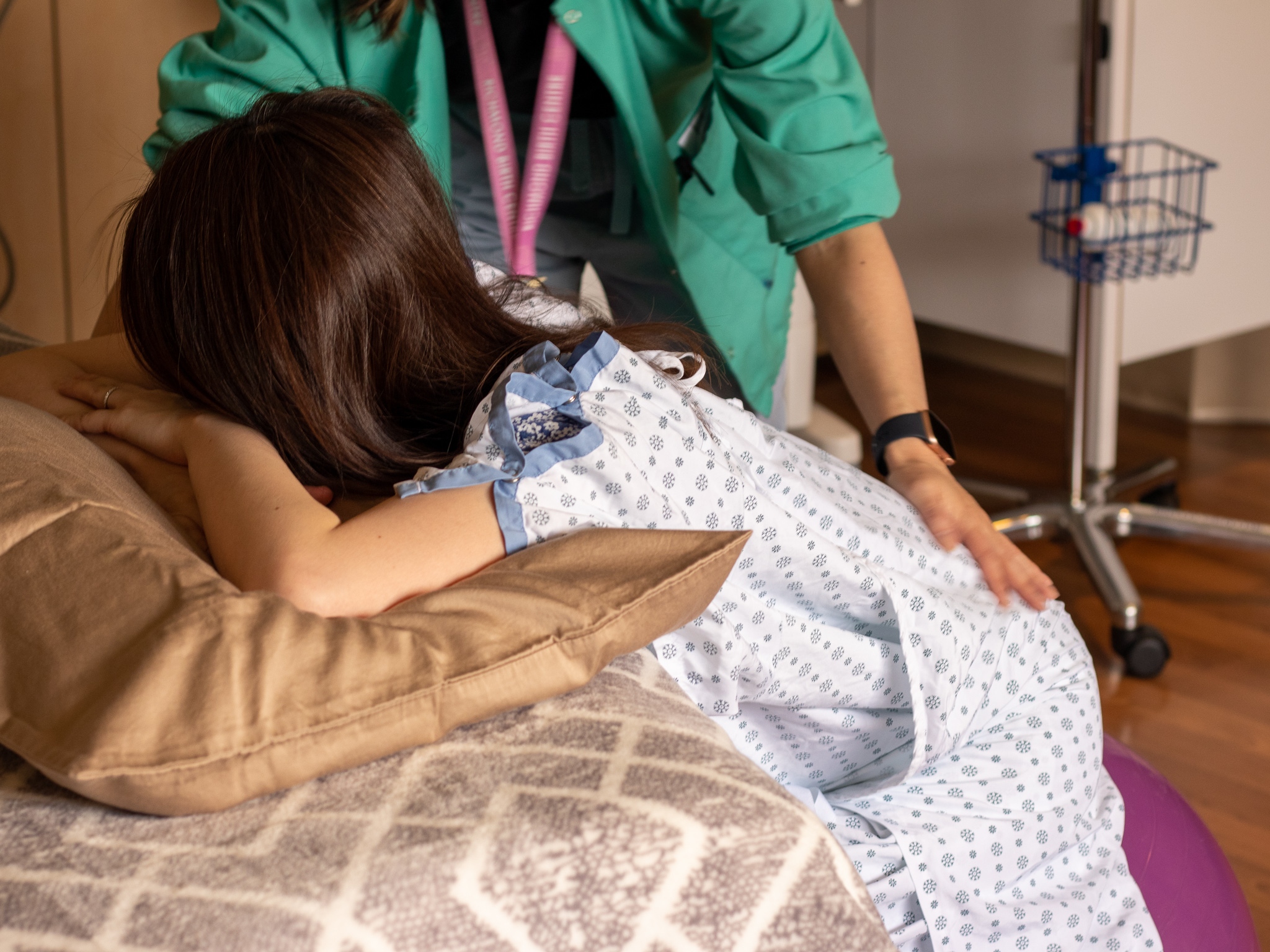
During Labour and Birth
To support you during labour and birth, you are welcome to have your partner and another person(s) with you. The Birth Centre staff will want to know who you wish to be present at your birth. Please note, Birth Centre staff cannot provide childcare services while you are in labour. Plan to have another adult supervise all children and possibly take care of them during your hospital stay.

Family and friends are allowed to visit at your discretion and at the discretion of Birth Centre staff. Please consider the need for ample rest and recovery after giving birth. We recommend that all visits be made short while you are in hospital.
Promoting Natural Birth Processes
We encourage freedom of movement, upright positions, shower and bath, and eating and drinking, as long as you and your baby are well and your labour is going smoothly. If an electronic fetal monitor is required to assess your baby’s heartbeat, wireless fetal monitors are available that will allow you to walk around the unit and enter the shower/bathtub.
Please note: this video provides general information for Richmond Hospital Birth Centre. Please contact Birth Centre staff for the most up-to-date details.
Pain Control in Labour
There are a number of ways to help ease labour pain that don’t involve medication. These include: a supportive partner, breathing and relaxation techniques, warm baths or showers, changing positions, ice packs and heat packs, acupuncture and acupressure, hypnosis, massage, and walking. Learn more.
Medications to help alleviate labour pain include:
Nitrous Oxide (laughing gas)
Gas breathed through a mask during contractions which can be used right up until the baby is born. It helps to take the focus away from the pain, but does not get rid of it completely.
Opioid medication (such as Morphine or Fentanyl)
An injection of medication, either into the muscle (for Morphine) or intravenously (Fentanyl) to help reduce pain. It can be given during labour but not too close to delivery as it can affect a newborn’s breathing at birth. Learn more.
Epidural
An infusion of pain medicine into the epidural space around the spinal cord, to block pain sensations from the lower body. An epidural requires an intravenous (IV) to be inserted, bloodwork to be drawn, and insertion by an anesthesiologist. Learn more.
Other Pain-relief Medications
Some pain-relief medications are not the type that you would request during labour. They are used as part of another procedure or for an emergency delivery. These include:
Pudendal Block
Injections of pain medicine into the pelvic area to reduce labour pain. Pudendal is one of the safest forms of anesthesia for numbing the area where the baby will come out. It can be helpful with fast labour when a little pain medicine is needed close to delivery. Learn more.
Local Anesthesia
The injection of numbing pain medicine into the skin. This is done before inserting an epidural or before making an episiotomy (an incision that widens the vaginal opening for birth). Learn more.
Spinal Block
An injection of pain medicine into your lower back. It quickly and fully numbs the pelvic area for medically-assisted births, such as a forceps or caesarean delivery. Learn more.
General Anesthesia
The use of inhaled or intravenous (IV) medicine, which makes you unconscious. It has more risks, yet it takes effect much faster than epidural or spinal anesthesia. General anesthesia is used for emergency C-sections that require a rapid delivery or if all other forms of anesthesia do not work. Learn more.
A summary of this information is also available in the Pain Relief Options section of your Baby’s Best Chance Handbook.
Stages of Labour
The process of having a baby occurs in four stages spanning hours or even a few days – from early labour through delivering the baby and the placenta. During labour, contractions in your uterus work to thin out and widen your cervix (entrance of the uterus) and move the baby into a position to be born.
Click through the graphic below to learn more about each stage.
Information on the stages of labour is also available in the Stages of Labour chapter of your Baby’s Best Chance Handbook.